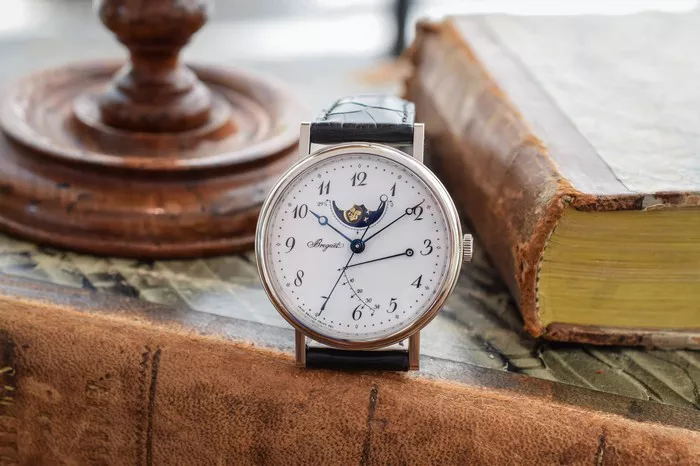Automatic watches, often celebrated for their intricate engineering and craftsmanship, have gained a loyal following among horology enthusiasts and casual wearers alike. However, despite their appeal, these timepieces come with their own set of disadvantages. This article will delve into the limitations of automatic watches, examining factors such as maintenance, accuracy, power reserve, and cost.
Understanding Automatic Watches
What Are Automatic Watches?
Automatic watches, also known as self-winding watches, are timepieces that harness kinetic energy generated by the movement of the wearer’s wrist. This movement winds a mainspring, providing power to the watch without the need for a battery. Unlike quartz watches, which rely on battery power and electronic movements, automatic watches are mechanical and represent a blend of artistry and engineering.
Popularity and Appeal
The appeal of automatic watches stems from their traditional craftsmanship, the intricate movements visible through the watch face, and their ability to connect wearers to a rich history of watchmaking. Brands like Rolex, Omega, and Seiko have cultivated a strong reputation, drawing collectors and enthusiasts who appreciate the engineering and artistry involved in each piece. However, this appeal doesn’t come without certain drawbacks.
Disadvantages of Automatic Watches
While automatic watches offer undeniable charm and sophistication, several disadvantages can impact their usability and longevity.
1. Maintenance Requirements
Regular Servicing
One of the primary drawbacks of automatic watches is the maintenance they require. Unlike quartz watches, which can run for years without servicing, automatic watches typically need regular upkeep to maintain optimal performance. It is recommended that automatic watches be serviced every three to five years. This servicing can be costly, ranging from $200 to $1,000 or more, depending on the brand and complexity of the movement.
Cleaning and Lubrication
Regular servicing often involves cleaning and lubricating the intricate components of the watch movement. Dust, dirt, and moisture can accumulate over time, which can affect the accuracy and reliability of the watch. A well-maintained automatic watch can last for generations, but neglecting its upkeep can lead to more severe issues and potentially irreparable damage.
2. Accuracy Issues
Comparison to Quartz Watches
Automatic watches tend to be less accurate than their quartz counterparts. While high-quality automatic watches can achieve accuracy within a few seconds per day, quartz watches can maintain accuracy within a few seconds per month. This discrepancy can be particularly frustrating for individuals who rely on their watches for precise timekeeping.
Impact of External Factors
Automatic watches are also susceptible to external factors that can affect their accuracy. Temperature changes, magnetic fields, and even the wearer’s activity level can cause fluctuations in timekeeping. In contrast, quartz watches are less affected by these variables, making them a more reliable option for those who prioritize accuracy.
3. Power Reserve Limitations
Limited Power Reserve
Automatic watches typically have a power reserve of 40 to 48 hours, meaning they can only run without being worn for a limited time before stopping. If a watch is not worn for an extended period, it will require manual winding or resetting. For individuals with multiple watches or those who may not wear their automatic watch daily, this limitation can be inconvenient.
Solutions for Power Reserve Issues
While some brands offer automatic watches with extended power reserves, these models are often more expensive. Additionally, watch winders—devices designed to keep automatic watches wound when not worn—are available but add another layer of cost and complexity for the wearer.
4. Cost Implications
Initial Purchase Price
Automatic watches tend to be more expensive than quartz watches due to the complexity of their movements and the craftsmanship involved in their creation. A basic automatic watch can cost several hundred dollars, while high-end models can easily exceed tens of thousands of dollars. For many consumers, the initial investment may not align with their needs or lifestyle.
Long-Term Financial Commitment
In addition to the higher purchase price, automatic watches often require ongoing financial commitments. Regular servicing, repairs, and potential part replacements can accumulate significant costs over the watch’s lifetime. This financial burden can deter potential buyers who may not be prepared for the long-term expenses associated with owning an automatic watch.
See Also Why Are Used Rolex More Expensive Than New
Conclusion
While automatic watches boast a rich history and intricate design, they come with disadvantages that potential buyers should consider. The maintenance requirements, accuracy issues, limited power reserves, and higher costs can impact the overall experience of owning and wearing an automatic watch. For some, these factors may outweigh the charm and craftsmanship that automatic watches offer. Understanding these disadvantages can help consumers make informed decisions when choosing the right timepiece for their needs.
Ultimately, whether one opts for an automatic watch or a quartz alternative will depend on personal preferences, lifestyle, and priorities. For those who appreciate the artistry and tradition of watchmaking and are willing to invest the time and resources into their care, an automatic watch can be a treasured addition to their collection. However, for individuals who prioritize practicality, accuracy, and minimal maintenance, a quartz watch may be the more suitable choice. As with any significant purchase, it’s essential to weigh the pros and cons and choose the watch that best aligns with one’s lifestyle and values.
You Might Be Interested In


